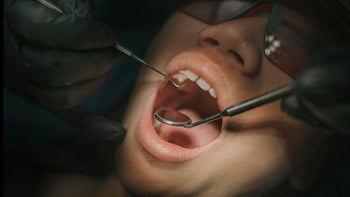
What You Should Know Before Having a Brazilian Butt Lift (BBL)
Key takeaways:
The Brazilian butt lift (BBL) is a cosmetic procedure that removes fat from other parts of your body and injects the fat into your buttocks.
The BBL can improve your overall body shape in the long run, but it’s also one of the riskiest cosmetic procedures.
To decrease your risk of complications, work with an experienced and board-certified plastic surgeon.
Table of contents

The Brazilian butt lift (BBL) is a cosmetic surgery that can change your overall body shape by giving you a rounder, fuller bottom. If you’re looking for options that can change your silhouette, a BBL might deliver the results you want. BBLs can be successful when a board-certified plastic surgeon performs the procedure.
But BBLs are also risky. In 2018, research showed that BBLs have the highest death rate of any cosmetic procedure. And while complication rates may be improving, it’s still a huge factor to take into account when making this decision. So, what should you know about the BBL? Let’s take a look at the process, recovery, and how to make sure you have a safe procedure.
What is a Brazilian butt lift?
The BBL is a type of buttock enhancement surgery. Specifically, it’s a gluteal autologous fat transfer. This means during the procedure, a surgeon moves your own fat cells from other part(s) of your body — usually the belly, thighs, and hips — to your buttocks.
Search and compare options
The terms “Brazilian” and “butt lift” are actually misleading. The BBL isn’t a buttock lift, which is a different type of cosmetic surgery. It also has nothing to do with Brazil — it wasn’t invented there. The term originated from a television show on “The Learning Channel” in 1996. And this moniker has stuck, despite attempts to rebrand the procedure by its proper name.
The BBL essentially removes unwanted or excess fat from one area of your body and places it into an area where you might desire more fullness. The BBL may also provide more natural-looking results than buttock implants.
Who should have a BBL?
No one needs a BBL. Genes determine your body shape, and for most people there’s not a whole lot that you can or need to do about it. Diet and exercise can definitely help tone, shape, and strengthen your body, but that may not be enough of a change for some people.
If you’re interested in making more significant changes to your appearance and body shape, surgical procedures (like the BBL) can help.
A BBL may be an option for you if you want a buttock augmentation without using buttock implants.
A BBL is best for people who:
Are close to their ideal body weight
Are in good health
Don’t smoke
Have good skin tone
Have enough body fat in other areas to inject into the buttocks
Strengthen your glutes: Learn about the right ways to do glute bridges and hip thrusts.
What you eat after surgery matters: Speed up recovery by choosing high-protein and nutrient-rich foods that promote healing.
Worried about post-op pain? Understand your options for pain relief medication after surgery.
How do I prepare for a Brazilian butt lift?
To get ready for a BBL, there are a few things you should do:
Avoid alcohol and nicotine for a few weeks before surgery.
Set up a recovery space for after your procedure.
Get materials together — like stool softeners, prescriptions, and donut pillows — for your post-surgery recovery.
Invest in clothing that’s easy to slip on and off.
Talk to your primary healthcare provider about whether you need to stop any medications before surgery.
What happens during a BBL procedure?
During the BBL procedure, here is what you can expect to happen:
You will get general anesthesia so you don’t feel pain during the procedure.
Your surgeon will use liposuction to remove fat from your abdomen, hips, lower back, or thighs.
Then, the surgeon makes incisions in your buttocks. They inject the collected fat cells into the superficial fat layer of your buttocks through these incisions.
Your surgeon will then close any incisions and may insert surgical drains. These drains may need to stay in place for a few days after your surgery.
Read more like this
Explore these related articles, suggested for readers like you.
How long does recovery take after a Brazilian butt lift?
Recovering from a BBL can be challenging. You should expect to have some bruising and swelling around your incisions. Over time, the swelling and bruising will lessen. But this can take a while. You may need to use pain relievers to help control pain during this time.
One of the biggest challenges of recovery from a BBL is that you can’t sit directly on your buttocks for up to 8 weeks. You’ll need to sleep only on your stomach or sides for 8 weeks after surgery. If you must sit, sit on a donut-shaped pillow to help relieve any pressure on the healing incisions. You might also need to wear a compression garment to help with healing.
You can restart light, daily activities about 1 week after the BBL. After 1 month, your surgeon might give you the green light for light exercise, like fast walking. You won’t be able to return to regular activities and exercise for at least 8 weeks.
How much does a Brazilian butt lift cost?
Any elective surgical procedure can be quite costly since insurance doesn’t cover it. On average, a BBL costs just over $4,800, but it can vary based on your surgeon and location.
Keep in mind, this cost only includes the surgery. It doesn’t include anesthesia, other operating room expenses, or visits to your surgeon before and after the procedure. And it doesn’t include the cost of treating any complications you may have.
Once you’ve found a recommended, board-certified plastic surgeon who’s experienced in this type of surgery, make sure to ask questions about all the costs involved. You might also consider insurance to cover any complications associated with your surgery.
What are the risks of a Brazilian butt lift?
The BBL has the dubious honor of being one of the riskiest cosmetic surgeries. Complications, like infection and bleeding, can happen with any surgery. And some things, like bruising and discomfort, are unavoidable.
There’s also a risk that you won’t be happy with the overall appearance of your body after surgery. Results are not guaranteed — you might notice asymmetry of your buttocks, scarring, skin thinning, and discoloration. If you’re not happy with the results, you might need additional surgeries to correct these issues.
But the BBL comes with additional risks, like:
Fat embolism (a potentially deadly issue where fat gets into your blood and lungs)
Fat necrosis (death of the fat cells that were injected into your buttocks)
Seromas (fluid accumulation in your buttocks)
People have died after having a BBL, usually because they develop a fat embolism. One study from 2017 showed that more people die following BBLs than any other cosmetic surgery.
In response, the American Society for Plastic Surgeons developed an advisory statement on gluteal fat grafting. And several plastic surgery societies developed a multi-society task force to help improve the safety of the BBL. This included educating surgeons and performing more studies on the procedure. Newer studies show that these interventions improved BBL safety. But this was only true when a fully trained and U.S. board-certified plastic surgeon performed the BBL.
Tips for choosing a BBL surgeon
If you do decide to get a BBL, it’s definitely worth doing your research. This will help you find a team that will keep you safe during and after surgery. And it will increase the chances you’ll be happy with the results of your procedure.
So, when choosing a cosmetic surgeon for a BBL, here are some things to consider:
Your surgeon should be board-certified by the American Board of Plastic Surgery.
They should have lots of experience performing BBLs specifically.
Ask to look at before and after photos of their previous work and look for consistent results.
The facility where the surgery takes place should be accredited.
You should feel comfortable, respected, and listened to by the surgeon and other members of the facility’s care team.
Your surgeon’s office and facility should have good customer service.
Frequently asked questions
You won’t feel any pain during your procedure because a BBL happens under general anesthetic. This means you are in a deep sleep. Once you wake up, though, recovery can be slow and painful. You won’t be able to sit or lie on your bottom for several weeks, and you will be uncomfortable for many weeks as your bottom heals.
This is a procedure that combines liposuction (removing fat) with butt augmentation. With liposuction, fat is removed through a thin suction tube from all around your midsection. With BBL, fat is transferred to the butt to augment it.
If you want a long-term change in your body shape, then the BBL may be worth it because the results last. The fat cells placed in the buttocks are meant to survive for years, and the fat cells that liposuction removed should not return to the original area.
The results of a BBL will last as long as you maintain your current body weight. Any significant changes in weight will change the appearance of your BBL. Gaining weight may increase the size of your BBL and losing weight may cause it to get smaller.
The bottom line
The Brazilian butt lift (BBL) is a cosmetic procedure that can result in a long-term change to your body shape. It involves surgically moving fat from parts of your body where you don’t want it (like your thighs, hips, and belly) into your buttocks. Of all cosmetic surgeries, the BBL has one of the highest rates of complications. And recovery can be long and painful. Choose an experienced, board-certified plastic surgeon to perform the procedure for the best and safest outcome.
Why trust our experts?


References
Adeyinka, A., et al. (2022). Fat embolism. StatPearls.
American Academy of Cosmetic Surgery. (n.d.). Brazilian butt lift.
American Board of Cosmetic Surgery. (n.d.). Brazilian butt lift.
American Board of Cosmetic Surgery. (n.d.). How to find the right cosmetic surgeon for you.
American Board of Cosmetic Surgery. (n.d.). Why it’s important to choose an accredited surgical facility.
American Society of Plastic Surgeons. (n.d.). How much does buttock enhancement cost?
American Society of Plastic Surgeons. (n.d.). What are buttock enhancement surgeries?
American Society of Plastic Surgeons. (n.d.). What are the risks of buttock enhancement?
American Society of Plastic Surgeons. (n.d.). Gluteal fat grafting advisory.
American Society of Plastic Surgeons. (2018). Plastic surgery societies issue urgent warning about the risks associated with Brazilian butt lifts.
Azad, K. (2016). Recovering from a Brazilian butt lift. American Society of Plastic Surgeons.
Clark, K. (2022). Seven things you need to know about a Brazilian butt lift. American Society of Plastic Surgeons.
Del Vecchio, D. A., et al. (2020). A changing paradigm: The Brazilian butt lift is neither Brazilian nor a lift—why it needs to be called safe subcutaneous buttock augmentation. Plastic and Reconstructive Surgery.
Ghavami, A., et al. (2018). Gluteal augmentation and contouring with autologous fat transfer: Part I. Clinics in Plastic Surgery.
Leonard Grossman, MD. (2015). Brazilian butt lift in Brooklyn - Dr Leonard Grossman [video]. YouTube.
Mofid, M. M., et al. (2013). Buttock augmentation with silicone implants: A multicenter survey review of 2226 patients. Plastic and Reconstructive Surgery.
Mofid, M. M., et al. (2017). Report on mortality from gluteal fat grafting: Recommendations from the ASERF Task Force. Aesthetic Surgery Journal.
Singer, R. (2020). Commentary on: Improvement in Brazilian butt lift (BBL) safety with the current recommendations from ASERF, ASAPS, and ISAPS. Aesthetic Surgery Journal.





























